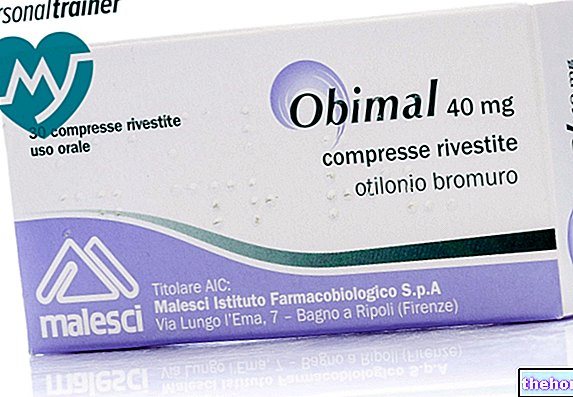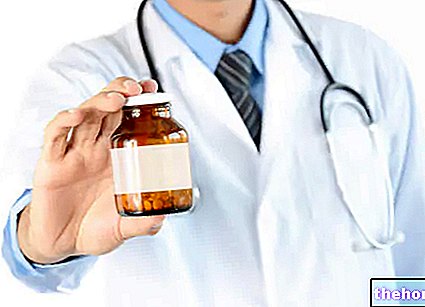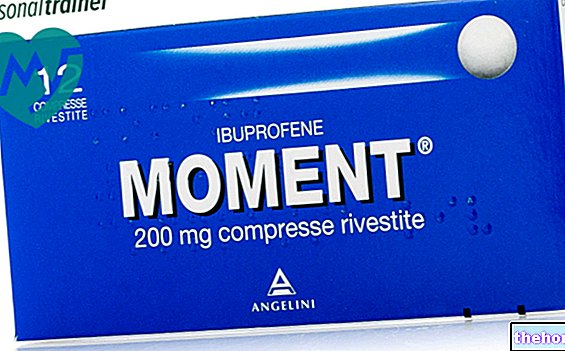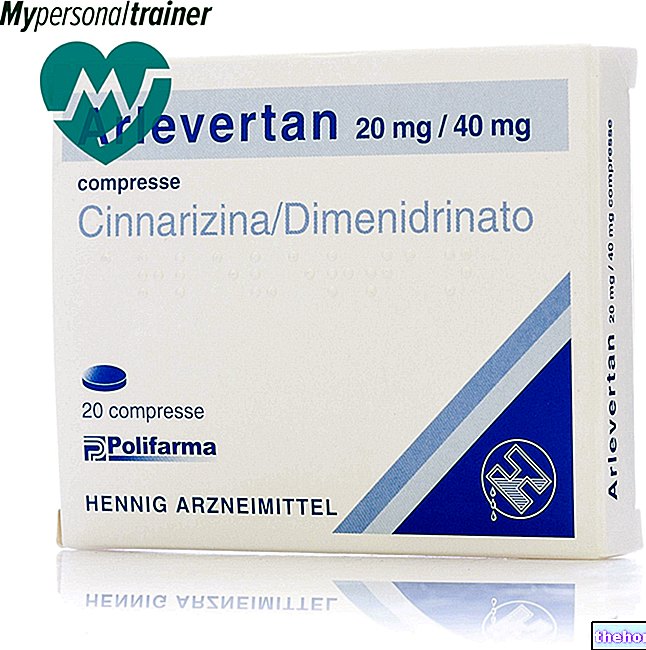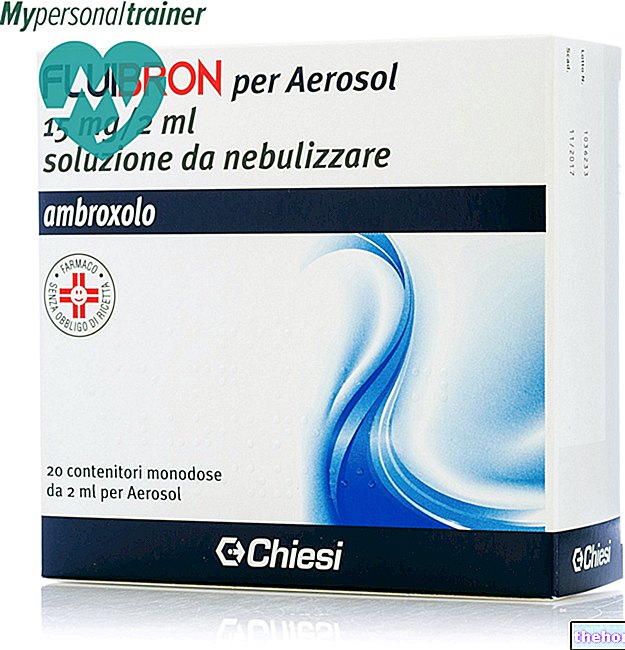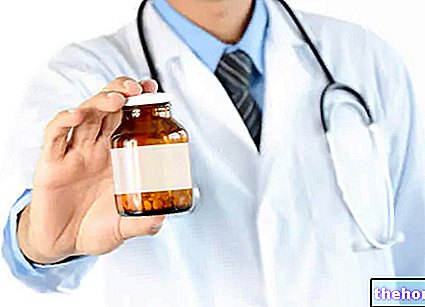Active ingredients: Lincomycin
Lincocin 500 mg hard capsules
Lincocin 300 mg solution for injection
Lincocin 600 mg solution for injection
Why is Lincocin used? What is it for?
PHARMACOTHERAPEUTIC CATEGORY
Antibacterials for systemic use. Lincosamides.
THERAPEUTIC INDICATIONS
Lincocin is indicated in severe infections caused by strains of staphylococci, pneumococci and streptococci sensitive to its action.
Its use should be reserved for patients allergic to penicillin or for patients for whom, in the opinion of the doctor, penicillin is not indicated.
In consideration of the possible onset of severe colitis (see SPECIAL WARNINGS), the doctor, before starting a therapy with Lincocin, must carefully evaluate, also in relation to the nature of the infection to be treated, the possibility of using less toxic drugs as an alternative.
Lincocin has been shown to be effective in the treatment of infections caused by staphylococci resistant to other antibiotics: however, since strains of staphylococci resistant to Lincocin have been isolated, during therapy with this antibiotic, sensitivity tests should be performed.
The drug can be administered together with other antibiotics if needed.
Contraindications When Lincocin should not be used
Hypersensitivity to the active substance, to clindamycin or to any of the excipients.
It is not indicated in the treatment of trivial bacterial infections or viral infections.
Lincocin solution for injection must not be administered to premature babies, newborns and children under 2 years of age (see SPECIAL WARNINGS).
Precautions for use What you need to know before taking Lincocin
During prolonged therapy, periodic liver and kidney function tests and blood counts should be performed.
Although lincomycin appears to diffuse into CSF, its levels in CSF may be inadequate for the treatment of meningitis. Therefore, the drug should not be used for the treatment of meningitis.
Sometimes, the use of antibiotics can cause the development of resistant germs, especially yeasts. Should superinfection occur, appropriate therapeutic measures should be taken.
Lincomycin should not be administered by intravenous bolus, but by infusion, as described in the section DOSE, METHOD AND TIME OF ADMINISTRATION.
Interactions Which drugs or foods can modify the effect of Lincocin
Tell your doctor or pharmacist if you have recently taken any other medicines, even those without a prescription.
Lincomycin may potentiate the neuromuscular blocking effect of drugs specific for this action. Antagonism between lincomycin and erythromycin has been demonstrated in vitro. Cross-reactivity between clindamycin and lincomycin is known.
Warnings It is important to know that:
Cases of Clostridium difficile associated diarrhea (CDAD) have been reported with the use of nearly all antibiotics, including lincomycin, and can range in severity from mild diarrhea to fatal colitis. Treatment with antibiotics alters normal flora. colon and leads to overgrowth of C. difficult.
The C. difficult produces toxins A and B which contribute to the development of diarrhea. The strains of C. difficult that produce excess toxins cause increased morbidity and mortality rates, as these infections are typically refractory to antibacterial therapy and often require a colectomy. The possibility of associated diarrhea should be considered C. difficult in all patients who present with diarrhea following antibiotic treatment. A careful medical history is also required since cases of diarrhea associated with C. difficult they have also been reported over two months after antibiotic administration.
Cases of modest colitis may regress upon discontinuation of lincomycin therapy alone. Moderate to severe cases should be promptly treated with administration of fluids and electrolyte and protein solutions (if indicated).
Antiperistaltics, such as opiates and diphenoxylate with atropine, can prolong and / or worsen the situation. Vancomycin has been shown to be effective in the treatment of pseudomembranous colitis caused by Clostridium difficile. The dose usually used in adults is 0.5 g - 2 g / day of oral vancomycin, divided into three or four administrations for 7-10 days.
Colestyramine and colestipol resins are capable of binding vancomycin in vitro. If both a resin and vancomycin are to be administered concomitantly, it is advisable to separate the administration times of each drug. However, all other causes responsible for the onset of colitis should be taken into consideration.
Pregnancy and breastfeeding
As the safety of use has not been ascertained, the product should not be used in pregnant and breastfeeding women. Lincomycin is excreted in breast milk. Benzyl alcohol can cross the placenta.
Use in children
Lincocin solution for injection contains benzyl alcohol (9.45 mg / ml) as a preservative. The use of benzyl alcohol has been associated with serious adverse reactions, including "gasping syndrome" and death in pediatric patients. Although the normal therapeutic doses of the product generally carry substantially lower quantities of benzyl alcohol than those associated with the "gasping syndrome", the minimum quantity of benzyl alcohol at which toxicity can occur is not known. The risk of benzyl alcohol toxicity depends on the quantity administered and the hepatic ability to eliminate the substance. In premature and underweight infants there may be a greater likelihood of developing toxicity.
Benzyl alcohol can cause toxic and allergic reactions in infants and children up to 3 years of age (see CONTRAINDICATIONS).
The capsules contain lactose. If the patient has been diagnosed with "intolerance to some sugars, he should consult his doctor before taking this medicine."
Particular groups of patients
The data available so far show that elderly or debilitated patients can tolerate diarrhea less well; should these patients be treated with Lincocin, pay particular attention to changes in the frequency of bowel movements.
Lincocin should be prescribed with caution in individuals with a history of gastrointestinal disease, particularly colitis, and in atopic individuals.
The serum half-life of lincomycin increases in patients with impaired hepatic or renal function. In such patients a decrease in the frequency of lincomycin administration should be considered. In particular, as adequate clinical data are not yet available, it would be advisable to avoid the use of Lincocin in patients with pre-existing liver disease, unless the clinical situation suggests such use is indispensable.
If a patient with moniliasis is to be treated with Lincocin, concomitantly administer an antimonilia drug.
Lincocin like other drugs should be used with caution in patients with a history of asthma or other significant allergic manifestations.
Dosage and method of use How to use Lincocin: Dosage
Oral way
Adults
- Severe infections: 500 mg every 8 hours.
- Very severe infections: 500 mg every 6 hours.
For optimal absorption, it is recommended not to ingest anything other than water for 1-2 hours both before and after administration of Lincocin.
Intramuscular route
Adults
- Severe infections: 600 mg (2 ml) every 24 hours.
- Very serious infections: 600 mg (2 ml) every 12 hours or more frequently, depending on the severity of the infection.
Children (over 2 years of age)
- Severe infections: 10 mg / kg / day by intramuscular injection.
- Very severe infections: 10 mg / kg every 12 hours or more frequently.
Intravenous route
Adults
600 mg (2 ml) intravenously every 8-12 hours.
In case of very severe infections, the dose can be increased.
Children (over 2 years of age)
10-20 mg / kg / day divided into 2-3 infusions every 12-8 hours.
Lincocin solution for injection must be diluted to a concentration not exceeding 600 mg / 100 ml (see Compatibility) and administered by slow infusion lasting not less than 1 hour. Serious cardiopulmonary reactions have occurred when this drug was administered at higher than recommended concentrations and rates of administration.
In case of beta-haemolytic streptococcal infections, treatment should be continued for at least 10 days to decrease the likelihood of rheumatic disease or glomerulonephritis.
Patients with renal impairment: when lincomycin therapy is required in patients with severely impaired renal function, administer doses corresponding to 25-30% of those recommended for patients with normal renal function.
Compatibility
Lincomycin is physically compatible for 24 hours at room temperature unless otherwise indicated with:
Solutions for infusion: Dextrose in water, sol. 5% and 10%; Dextrose in saline solution, sol. 5% and 10%; Ringer's solution; 1/6 molar sodium lactate; Travert 10% - Electrolyte No. 1; Dextran in saline solution 6% weight / volume.
Vitamins in solutions for infusion: B complex; B complex with ascorbic acid.
Antibiotics in solutions for infusion: sodium penicillin G (satisfactory for 4 hours); cephalothin; cephaloridin; tetracycline HCL; colistimethate (satisfactory for 4 hours); ampicillin; methicillin; chloramphenicol; polymyxin B sulfate.
Incompatibility
Lincomycin is physically incompatible with novobiocin and kanamycin.
It must be emphasized that the compatibility and incompatibility determinations are only physical observations and not chemical determinations. An adequate clinical evaluation of the safety and efficacy of these combinations has not been performed.
Overdose What to do if you have taken an overdose of Lincocin
In case of accidental ingestion / intake of an excessive dose of Lincocin, notify your doctor immediately or go to the nearest hospital.
If you have any questions about the use of Lincocin, ask your doctor or pharmacist.
Side Effects What are the side effects of Lincocin
Like all medicines, Lincocin can cause side effects, although not everybody gets them.
Gastrointestinal: glossitis, stomatitis, nausea, vomiting, persistent diarrhea (see SPECIAL WARNINGS), enterocolitis, anal itching and, with oral preparations, esophagitis.
Haematopoietic system: cases of neutropenia, leukopenia, agranulocytosis, thrombocytopenic purpura have been reported. There have been rare cases of aplastic anemia and pancytopenia, for which the role played by lincomycin could not be excluded.
Hypersensitivity reactions: hypersensitivity reactions have been reported such as: angioneurotic edema, serum sickness and anaphylaxis; some of these cases occurred in patients known to be sensitive to penicillin. Rare cases of erythema multiforme, some of the Stevens-Johnson syndrome type, have been associated with the administration of Lincocin. If allergic reactions occur, therapy should be discontinued and the usual emergency therapies (adrenaline, corticosteroids, antihistamines) instituted.
Skin and mucous membranes: itching, skin rashes, urticaria, vaginitis and rare cases of exfoliative and vesiculo-bullous dermatitis.
Liver: Jaundice and abnormal liver function tests (particularly an increase in transaminases) have been observed during lincomycin therapy.
Kidney: Although a direct relationship between lincomycin therapy and renal damage has not been established, renal dysfunction evidenced by increased BUN, oliguria and / or proteinuria has been observed on rare occasions.
Cardiovascular system: following parenteral administration, particularly after too rapid administration, cases of hypotension have been reported. Rare cases of cardiopulmonary arrest have been reported after too rapid intravenous administration (see DOSE, METHOD AND TIME OF ADMINISTRATION).
Sense organs: Cases of vertigo and tinnitus have occasionally been reported.
Local reactions: Patients have usually demonstrated excellent local tolerability following administration of Lincocin. Cases of local irritation, pain, induration and sterile abscess have been noted following intramuscular injection. Cases of thrombophlebitis have been reported following intravenous injection. These reactions can be minimized by deep intramuscular injection and by avoiding the use of indwelling intravenous catheters.
Compliance with the instructions contained in the package leaflet reduces the risk of undesirable effects.
Reporting of side effects
If you get any side effects, talk to your doctor or pharmacist. This includes any possible side effects not listed in this leaflet. Side effects can also be reported directly via the national reporting system at https://www.aifa.gov.it/content/segnalazioni-reazioni-avverse. By reporting side effects you can help provide more information on safety of this medicine.
Expiry and Retention
Expiry: see the expiry date printed on the package. The expiry date refers to the last day of the month.
Warning: do not use the medicine after the expiry date indicated on the package. The expiry date refers to the product in intact packaging, correctly stored.
Hard capsules
Do not store above 25 ° C
Injectable solution
There are no special precautions for storage
KEEP THE MEDICINAL PRODUCT OUT OF THE SIGHT AND REACH OF CHILDREN.
Medicines should not be disposed of via wastewater or household waste. Ask your pharmacist how to dispose of medicines you no longer use. This will help protect the environment.
COMPOSITION
Hard capsules
Each 500 mg capsule contains: 544.81 mg lincomycin hydrochloride (equivalent to 500 mg lincomycin base).
Excipients: talc, magnesium stearate, lactose monohydrate. The capsule shell contains: gelatin, titanium dioxide, E132, E172.
Injectable solution
Each 1ml vial contains: 326.88mg lincomycin hydrochloride (equivalent to 300mg lincomycin base). Each 2ml vial contains: 653.77mg lincomycin hydrochloride (equivalent to 600mg lincomycin base).
Excipients: benzyl alcohol (9.45 mg / ml); water for injections.
PHARMACEUTICAL FORM AND CONTENT
Hard capsules
Carton containing 12 capsules of 500 mg.
ORAL USE
Injectable solution
300 mg solution for injection - 1 ampoule 1 ml
600 mg solution for injection - 1 ampoule 2 ml.
INTRAMUSCULAR AND INTRAMUSCULAR USE
Source Package Leaflet: AIFA (Italian Medicines Agency). Content published in January 2016. The information present may not be up-to-date.
To have access to the most up-to-date version, it is advisable to access the AIFA (Italian Medicines Agency) website. Disclaimer and useful information.
01.0 NAME OF THE MEDICINAL PRODUCT
LINCOCIN
02.0 QUALITATIVE AND QUANTITATIVE COMPOSITION
Lincocin capsules - One capsule contains:
lincomycin hydrochloride 544.81 mg equal to lincomycin base 500 mg).
03.0 PHARMACEUTICAL FORM
Capsules: oral use.
Sterile injectable solution: intravenous and intramuscular use.
04.0 CLINICAL INFORMATION
04.1 Therapeutic indications
Lincocin is indicated in severe infections caused by strains of staphylococci, pneumococci and streptococci sensitive to its action.
Its use should be reserved for patients allergic to penicillin or for patients for whom, in the opinion of the physician, penicillin is not indicated. In consideration of the possible onset of severe colitis (see "Special warnings and precautions for" use "), the Doctor, before starting a therapy with Lincocin, should carefully evaluate, also in relation to the nature of the infection to be treated, the possibility to use less toxic drugs as an alternative.
Lincocin has been shown to be effective in the treatment of infections caused by staphylococci resistant to other antibiotics: however, since strains of staphylococci resistant to Lincocin have been isolated, during therapy with this antibiotic, sensitivity tests should be performed. The drug can be administered together with other antibiotics if needed.
04.2 Posology and method of administration
Oral way
- Adults
- Severe infections: 500 mg every 8 hours.
- Very severe infections: 500 mg every 6 hours.
For optimal absorption, it is recommended not to ingest anything other than water for 1-2 hours both before and after administration of Lincocin.
Intramuscular route
- Adults
- Severe infections: 600 mg (2 ml) every 24 hours.
- Very serious infections: 600 mg (2 ml) every 12 hours or more frequently, depending on the severity of the infection.
- Children
- Severe infections: 10 mg / kg / day by intramuscular injection.
- Very severe infections: 10 mg / kg every 12 hours or more frequently.
Intravenous route
- Adults
600 mg (2 ml) intravenously every 8-12 hours.
In case of very severe infections, the dose can be increased.
- Children
10-20 mg / kg / day divided into 2-3 infusions every 12-8 hours.
Lincocin must be diluted to a concentration not exceeding 600 mg / 100 ml (see "Compatibility") and administered by slow infusion lasting no less than 1 hour. Serious cardiopulmonary reactions occurred when this drug was administered at higher than recommended concentrations and rates of administration.
In case of β-haemolytic streptococcal infections, treatment should be continued for at least 10 days to decrease the likelihood of rheumatic disease or glomerulonephritis.
Patients with renal impairment: when lincomycin therapy is required in patients with severely impaired renal function, administer doses corresponding to 25-30% of those recommended for patients with normal renal function.
Compatibility
Lincomycin is physically compatible for 24 hours at room temperature unless otherwise indicated with:
- solutions for infusion: dextrose in water, sol. 5% and 10%; dextrose in saline solution, sol. 5% and 10%; ringer's solution; 1/6 molar sodium lactate; Travert 10% - electrolyte No. 1; dextran in saline solution 6% weight / volume.
- vitamins in solutions for infusion: B complex; B complex with ascorbic acid.
- antibiotics in infusion solutions: sodium penicillin G (satisfactory for 4 hours); cephalothin; cephaloridin; tetracycline HCl; colistimethate (satisfactory for 4 hours); ampicillin; methicillin; chloramphenicol; polymyxin B sulfate.
It must be emphasized that the compatibility and incompatibility determinations are only physical observations and not chemical determinations. An adequate clinical evaluation of the safety and efficacy of these combinations has not been performed.
04.3 Contraindications
It must not be used in patients who are hypersensitive to lincomycin and clindamycin. It is not indicated in the treatment of trivial bacterial infections or viral infections.
04.4 Special warnings and appropriate precautions for use
Following the administration of Lincocin, cases of modest diarrhea have been reported which may regress to simple withdrawal of the antibiotic. Some cases of persistent and severe diarrhea have also been reported. Associated with this diarrhea, the presence of of blood and mucus in the stool and in some cases diarrhea has resulted in acute colitis even with a fatal outcome. The onset of antibiotic-induced colitis has occurred during or even two-three to several weeks after the administration of the antibiotic. Studies have shown the presence of one or more clostridial toxins, which is / are one of the primary causes of antibiotic-induced colitis. Colitis is usually characterized by severe and persistent diarrhea and severe abdominal cramps, and blood and mucus may be found in the stool. If left untreated it can result in peritonitis, shock and toxic megacolon. Endoscopic examination may reveal the presence of pseudomembranous colitis. In cases of suspected colitis, a rectosigmoidoscopic examination is recommended. The presence of the disease can be further confirmed by stool cultures with selective medium for Clostridium difficile and examination of the specimen for the search for Clostridium difficile toxin (s).
Cases of modest colitis may regress upon discontinuation of lincomycin therapy alone. Moderate to severe cases should be promptly treated with administration of fluids and electrolyte and protein solutions (if indicated).
Antiperistaltics, such as opiates and diphenoxylate with atropine, can prolong and / or worsen the situation. Vancomycin has been shown to be effective in the treatment of pseudomembranous colitis caused by Clostridium difficile. The dose usually used in adults is 0.5 g - 2 g / day of oral vancomycin, divided into three or four administrations for 7-10 days.
The resins of cholestyramine and colestipol are able to bind vancomycin "in vitro". If both a resin and vancomycin are to be administered concomitantly, it is advisable to separate the administration times of each drug. However, all other causes responsible for the onset of colitis should be taken into consideration.
The data available so far show that elderly or debilitated patients can tolerate diarrhea less well; should these patients be treated with Lincocin, pay particular attention to changes in the frequency of bowel movements.
Lincocin should be prescribed with caution in individuals with a history of gastrointestinal disease, particularly colitis, and in atopic individuals. During prolonged therapy, periodic liver and kidney function tests and blood counts should be performed. The serum half-life of lincomycin increases in patients with impaired hepatic or renal function. In such patients a decrease in the frequency of lincomycin administration should be considered. In particular, as adequate clinical data are not yet available, it would be advisable to avoid the use of Lincocin in patients with pre-existing liver disease, unless the clinical situation suggests such use is indispensable.
Although lincomycin appears to diffuse into CSF, its levels in CSF may be inadequate for the treatment of meningitis. Therefore, the drug should not be used for the treatment of meningitis.
Lincomycin has been shown to possess neuromuscular blocking properties which may potentiate the action of other agents having such an action. Therefore lincomycin should be administered with caution in patients who are already being treated with such drugs.
Lincomycin should not be administered by intravenous bolus, but by infusion, as described in the "Posology" section. The use of antibiotics can cause the growth of germs that are not sensitive to the action of the antibiotic itself, particularly yeasts. Should superinfection occur, appropriate therapeutic measures must be taken. If a patient suffering from moniliasis must be treated with Lincocin, administer simultaneously an antimonilia drug.
Antagonism between lincomycin and erythromycin has been demonstrated "in vitro". Given the possible clinical relevance of this fact, these two drugs should not be administered simultaneously.
Lincocin like other drugs should be used with caution in patients with a history of asthma or other significant allergic manifestations.
Due to the presence of benzyl alcohol, the drug in its injectable form should not be given to children under 2 years of age.
Keep this medicine out of the reach of children.
04.5 Interactions with other medicinal products and other forms of interaction
Lincomycin may potentiate the neuromuscular blocking effect of drugs specific for this action. An antagonism between lincomycin and erythromycin has been demonstrated in vitro. Cross reactivity between clindamycin and lincomycin is known.
04.6 Pregnancy and lactation
As the safety of use has not been ascertained, the product should not be used in pregnant and breastfeeding women. Lincomycin is secreted in breast milk.
04.7 Effects on ability to drive and use machines
No data are known in this regard.
04.8 Undesirable effects
Gastrointestinal: glossitis, stomatitis, nausea, vomiting, persistent diarrhea (see "Special warnings and precautions for use"), enterocolitis, anal itching and, with oral preparations, esophagitis.
Haematopoietic system: cases of neutropenia, leukopenia, agranulocytosis, thrombocytopenic purpura have been reported. There have been rare cases of aplastic anemia and pancytopenia, for which the role played by lincomycin could not be excluded.
Hypersensitivity reactions: hypersensitivity reactions have been reported such as: angioneurotic edema, serum sickness and anaphylaxis; some of these cases occurred in patients known to be sensitive to penicillin. Rare cases of erythema multiforme, some of the Stevens-Johnson syndrome type, have been associated with the administration of Lincocin. If allergic reactions occur, therapy should be discontinued and the usual emergency therapies (adrenaline, corticosteroids, antihistamines) instituted.
Skin and mucous membranes: itching, skin rashes, urticaria, vaginitis and rare cases of exfoliative and vesiculo-bullous dermatitis.
Liver: Jaundice and abnormal liver function tests (particularly an increase in transaminases) have been observed during lincomycin therapy.
Kidney: Although a direct relationship between lincomycin therapy and renal damage has not been established, renal dysfunction evidenced by increased BUN, oliguria and / or proteinuria has been observed on rare occasions.
Cardiovascular system: following parenteral administration, particularly after too rapid administration, cases of hypotension have been reported. Rare cases of cardiopulmonary arrest have been reported after too rapid intravenous administration (see "Posology and method of administration").
Sense organs: Cases of vertigo and tinnitus have occasionally been reported.
Local reactions: Patients have usually demonstrated excellent local tolerability following administration of Lincocin. Cases of local irritation, pain, induration and sterile abscess have been noted following intramuscular injection. Cases of thrombophlebitis have been reported following intravenous injection. These reactions can be minimized by deep intramuscular injection and by avoiding the use of indwelling intravenous catheters.
04.9 Overdose
No data are known in this regard.
05.0 PHARMACOLOGICAL PROPERTIES
Lincocin (lincomycin) is an antibiotic produced by Streptomyces lincolnensis, var. lincolnensis.
05.1 Pharmacodynamic properties
Microbiological property
Lincocin has been shown to be effective against most Gram-positive germs.
Depending on the sensitivity of the organism and the concentration of the antibiotic, it can be bacteriostatic or bactericidal. Cross-resistance with penicillin, chloramphenicol, ampicillin, cephalosporins or tetracyclines has not been demonstrated. Despite chemical differences, lincomycin exhibits similar but not identical antibacterial activity to macrolide antibiotics (eg erythromycin). Some cross-resistance with erythromycin including a phenomenon known as dissociated cross-resistance or macrolide effect has been reported.
Germs, tested "in vitro" or "in vivo", did not rapidly develop resistance to Lincocin. Based on "in vitro" batch subculture experiments, staphylococci develop resistance to Lincocin slowly and gradually. This pattern of resistance development differs from that seen for streptomycin.
Studies conducted indicate that Lincocin is not characterized by cross-antigenicity with penicillin compounds. The spectrum of activity includes Micrococcus (Staphylococcus) aureus, Staphylococcus albus, Streptococcus beta haemolyticus, Streptococcus viridans, Diplococcus pneumoniae, Clostridium tetani, Clostridium perfringens, Corynebacterium diphorynteriae and Corynebacterium diphorynteriae.
Note: Lincocin is not active against most strains of Streptococcus faecalis, Neisseria gonorrheae, Neisseria meningitidis, Haemophilus influenziae or other Gram-negative germs and yeasts.
05.2 Pharmacokinetic properties
Lincocin is rapidly absorbed after an oral dose of 500 mg, reaching maximum blood levels in 2-4 hours. For most Gram-positive germs, concentrations are maintained above the minimal inhibitory concentration for 6-8 hours. Urinary elimination ranging from 1.0 to 31% (mean: 4%) occurs over a 24-hour period after a single oral dose of 500 mg. Biliary also appears to be important as a route of elimination. Significant concentrations have been demonstrated. of the antibiotic in almost all the tissues of the organism. Lincocin, in normal conditions, does not cross the blood-brain barrier, while it seems to overcome it with inflamed meninges.
Intramuscular administration of a single 600 mg dose produces maximum blood concentrations within 30 minutes, which are still measurable at the 24th hour. 1.8 to 24.8% (mean: 17.3%) of this dose is excreted via the urine.
The slow intravenous infusion (about 2 hours) of 600 mg of Lincocin in 500 ml of 5% glucose in distilled water, produces therapeutic levels for 14 hours. Urinary excretion varies from 4.9 to 30.3% (mean : 13.8%).
The half-life after oral, intramuscular or intravenous administration is 5.4 ± 1.0 hours. Hemodialysis and peritoneal dialysis do not interfere with blood concentrations.
05.3 Preclinical safety data
The acute toxicity data relating to the experimental animal are as follows:
General and local tolerability studies performed in rats with oral treatments up to 900 mg / kg / day over 28 days or by subcutaneous administration up to 80 mg / kg / day for 90 days have shown that lincomycin is well tolerated at doses higher than those recommended in clinical practice.
Lincomycin, administered in pregnant rats up to 330 mg / kg / day and subcutaneously up to 90 mg / kg / day for 10 days, did not adversely affect the course of gestation and embryo-fetal development in the rat.
06.0 PHARMACEUTICAL INFORMATION
06.1 Excipients
Lincocin capsules - One capsule contains:
Excipients: talc, magnesium stearate, lactose monohydrate.
Capsule constituents: gelatin, titanium dioxide, E132, E172.
Injectable Lincocin - One vial contains:
Excipients: benzyl alcohol; water for injections.
06.2 Incompatibility
Lincomycin is physically incompatible with novobiocin and kanamycin.
06.3 Period of validity
5 years.
06.4 Special precautions for storage
They are not required.
06.5 Nature of the immediate packaging and contents of the package
Capsules: blister in opaque PVC + aluminum: box of 12 capsules
Injectable: clear, clear glass vials with safety pre-opening:
1 vial of 300 mg / 1 ml + 1 disposable syringe.
1 vial of 600 mg / 2 ml + 1 disposable syringe.
06.6 Instructions for use and handling
They are not required.
07.0 MARKETING AUTHORIZATION HOLDER
PHARMACIA & UPJOHN S.p.A. - Milan
08.0 MARKETING AUTHORIZATION NUMBER
Lincocin 500 mg, 12 capsules AIC No. 020601023
Lincocin 300 mg, 1 ampoule of 1 ml AIC n. 020601062
Lincocin 600 mg, 1 ampoule of 2 ml AIC n. 020601035
09.0 DATE OF FIRST AUTHORIZATION OR RENEWAL OF THE AUTHORIZATION
June 2000
10.0 DATE OF REVISION OF THE TEXT
June 2000

